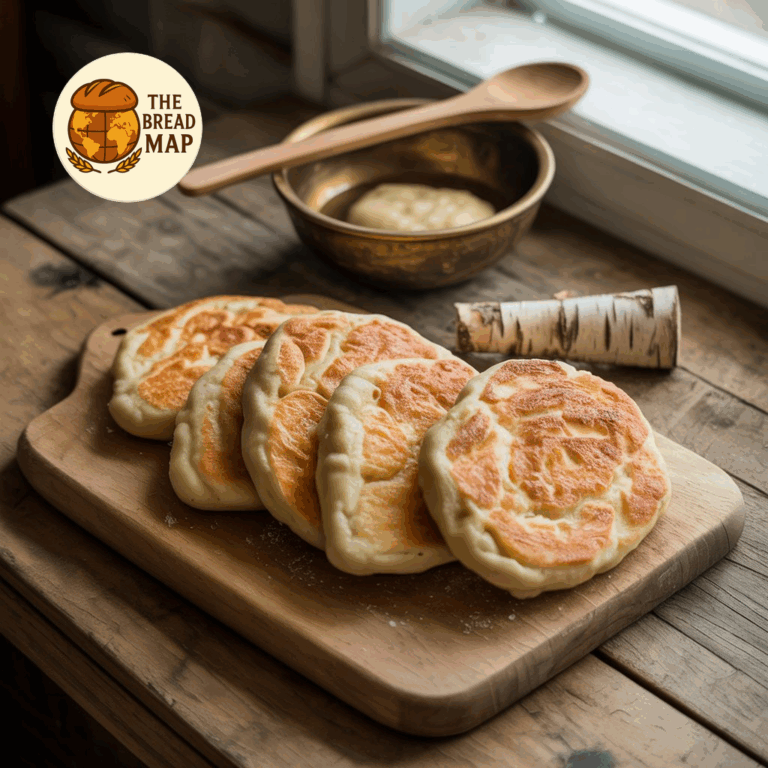
A golden, crisp crust giving way to soft, steaming warmth—this is bannock, a bread that carries the spirit of resilience and heritage. With roots that run deep through the First Nations and Métis communities of Canada, bannock is more than sustenance. It’s a food memory, a link to ancestors, and a comforting constant at gatherings, powwows, and campfires.
Introduction
Bannock holds a special place in many Indigenous households and communities across Canada. Whether fried in a cast-iron skillet or baked beside an open flame, its simplicity is part of its strength. Each version tells a story, passed down from generation to generation, tailored by time and circumstance.
Though recipes may vary, every bannock carries the taste of resourcefulness and cultural legacy. Easy to prepare, versatile to serve, and impossible to forget—bannock is the bread that brings people together.
Historical Background
While the name “bannock” originally stems from the Gaelic word “bannach,” associated with a Scottish oatmeal cake, Indigenous versions of this bread pre-date colonization in their own forms. When European ingredients like flour and lard were introduced through trade and colonization, Indigenous cooks adopted and adapted the recipe into what we know today as bannock.
During times of displacement and scarcity—particularly in the face of colonial food systems—bannock became a survival food. With minimal ingredients needed, it could be made on the move, over fire, or in the woods, making it a reliable staple for hunters, travelers, and families alike.
Region of Origin
Bannock is made and celebrated among Indigenous communities across Canada, notably among the First Nations and Métis peoples. From the plains of Manitoba to the coastal territories of British Columbia, different regions have their own spin on the bread. For instance, some may bake it in ovens, others may deep-fry, and some even wrap it around sticks to bake it over open flames during traditional storytelling gatherings.
Ingredients and Preparation
Made with just a handful of pantry staples, bannock is known for its flexibility and speedy preparation:
- All-purpose flour
- Water or milk
- Fat (commonly lard, shortening, butter, or oil)
- Salt
- Baking powder (for leavened versions)
There are two main ways to prepare bannock:
- Fried Bannock: Dough is shaped into palm-sized rounds and pan-fried until golden brown—giving a deliciously crispy outside and soft inside.
- Baked Bannock: Dough is spread in a cast-iron skillet or baking dish, then placed in an oven (or over a fire) until risen and browned.
Today, many home cooks add their own flair—sweetening with a bit of sugar and cinnamon, or folding in berries, herbs, or cheese for variation.
Cultural Importance
Bannock is more than nourishment—it symbolizes survival, strength, and shared identity. It plays a central role in cultural events, from community feasts to powwows, and is often served as a gesture of hospitality and care.
It’s also an avenue for cultural education and revival. Through bannock-making workshops, food sovereignty movements, and youth programs, Indigenous communities use this humble bread to connect younger generations with ancestral knowledge and pride.
- Shared at family dinners and community gatherings
- Cooked over fires during spiritual or communal campouts
- Taught in schools and community centers as part of cultural curriculum
In many ways, bannock is a delicious thread in the larger tapestry of Indigenous food heritage—a bread that both feeds and teaches, rooted in the past and rising into the future.
Leave a Reply